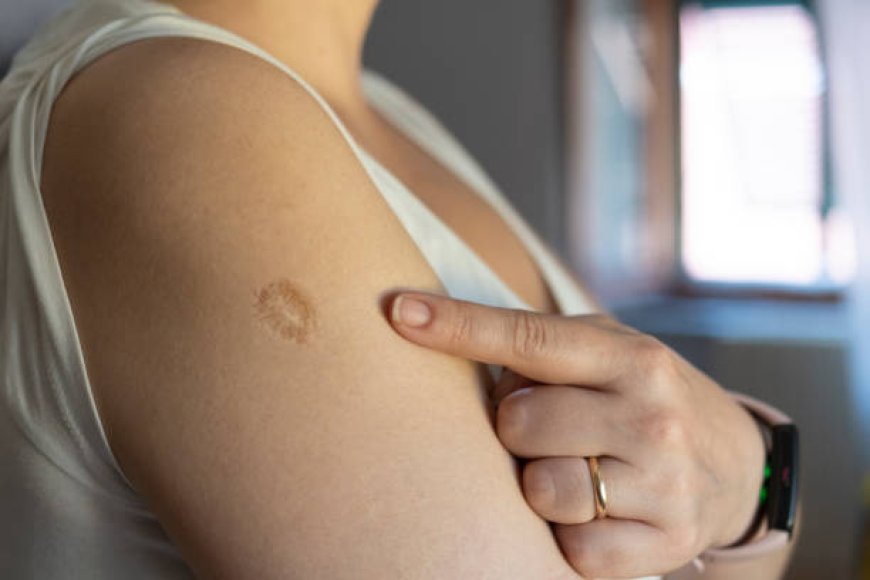Smallpox Vaccine Scar: What Is It and Why Do We Have It?
Learn about the smallpox vaccine scar, including what it is, why it exists, and how it impacts people. Discover why the scar is a permanent reminder of the importance of vaccines in public health

Smallpox Vaccine Scar: What Is It and Why Do We Have It?
Smallpox was once a highly infectious disease that killed millions of people worldwide. Thanks to the smallpox vaccine, the disease has been eradicated, and the world is now safer from this deadly virus. However, the vaccine leaves a unique mark on those who receive it - the smallpox vaccine scar. In this article, we will explore what the smallpox vaccine scar is, why it exists, and how it impacts those who have it.
Introduction
Smallpox was one of the most dreaded diseases in human history. Caused by the variola virus, it killed around 30% of the people who contracted it and left many others permanently scarred. The smallpox vaccine was developed in the 18th century and has been credited with eradicating the disease. This vaccine contains a live virus. However, the vaccine leaves a distinct scar on the upper left arm of those who receive it. Several smallpox epidemics occurred in the early 20th century, and around 3 out of every 10 infected individuals died as a result of the virus. Many smallpox survivors who contracted the infection developed lifelong scars, typically on their faces.
What is the Smallpox Vaccine Scar?
The smallpox vaccine scar is a round, raised mark that is typically located on the upper arm. It is usually between 3-4 millimeters in diameter and can vary in appearance depending on the person. Some scars are more noticeable than others and can be larger or more raised. The scar is usually a pale white color, but it can also be pink or reddish.
Why Do We Have this Scar?
The smallpox vaccine scar is a result of the way the vaccine is administered. The vaccine is delivered by a technique called scarification, where a needle dipped in the vaccine is used to puncture the skin. The needle creates a small wound on the surface of the skin, and the vaccine is then introduced into the wound. The body's immune system responds to the vaccine, creating immunity to the disease. The scar that forms is the result of the body's healing response to the wound caused by the needle.
Who Has this Scar?
Most people born before the 1970s in countries where the smallpox vaccine was given will have the smallpox vaccine scar. The vaccine was given as part of routine childhood immunizations in many countries until the 1970s when smallpox was declared eradicated. Today, the smallpox vaccine is only given to select groups of people who are at high risk of exposure to the virus, such as laboratory workers.
How Does the this Scar Impact People?
The smallpox vaccine scar is a harmless reminder of a time when smallpox was a deadly disease. It does not cause any health problems or impact a person's ability to receive other vaccines. However, some people may feel self-conscious about their scar or may experience discrimination because of it. In some cultures, the scar is considered a mark of beauty and is even considered attractive.
Why does it leave a Scar?
The smallpox vaccine leaves a scar because it creates a controlled infection that forces your immune system to defend your body against the virus. The exposure to the virus tends to leave a sore and itchy bump behind. This bump later becomes a larger blister that leaves a permanent scar as it dries up. Scars like the smallpox vaccine scar form due to the body’s natural healing process. In most people, this scar tissue is small. However, some people experience an inflammatory response to the injection of the vaccine, which can lead to a larger, raised scar Instead of giving an injection, a medical professional pricks your shoulder after dipping a two-pronged needle into the virus. At the vaccination site, you contract vaccinia. A blister that develops as a result of the infection eventually leaves a scar.
Can You Get Rid of this Scar?
There is no way to remove the smallpox vaccine scar once it has formed. However, the scar can fade over time and become less noticeable. In some cases, cosmetic procedures such as dermabrasion or laser therapy can be used to reduce the appearance of the scar. Still, these procedures are generally not recommended as they can be costly and have associated risks.
Conclusion
The smallpox vaccine scar is a reminder of a time when smallpox was a significant public health threat. Although the scar may be unsightly to some, it is a harmless and permanent reminder of the importance of vaccines. As we face new challenges from emerging infectious diseases, it is essential to remember the lessons learned from smallpox and continue to support vaccination efforts worldwide.
What's Your Reaction?






















































